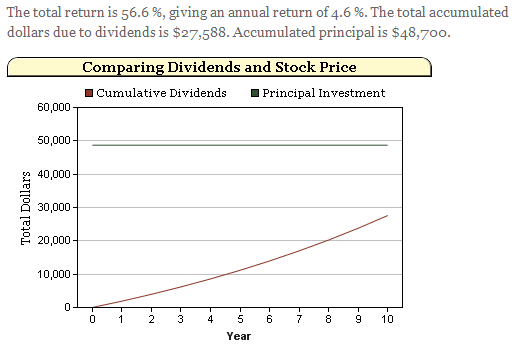Eli Lilly’s (LLY) stock price has risen by over 20% over the past six months. This has been good news for those who already own the stock, but to those looking to buy more in order to take advantage of their hefty dividend yield, this is actually bad news. Six months ago the dividend yield was 5%. Now it sits at only 3.9% due to the increase in the stock price.
With this drop in the dividend yield it’s a good time to reanalyze whether or not Eli Lilly should be a core holding for those looking for a lifetime of dividend income.
LLY Profile*:
Eli Lilly and Company develops, manufactures, and sells pharmaceutical products worldwide. It offers neuroscience products to treat schizophrenia, manic episodes, and bipolar maintenance; depression and diabetic peripheral neuropathic pain; attention-deficit hyperactivity disorder in children, adolescents, and adults; bulimia nervosa and obsessive-compulsive disorders; and bipolar depression and treatment-resistant depression.
*Profile taken from Yahoo Finance.
| LLY: |
| Div Yield | 1 Yr Div
Growth Rate | Annualized 5 Yr Div
Growth Rate |
| 3.9% | 0.0% | 4.5% |
| Payout Ratio | Last Year in Which
Div Did Not Increase |
| 50.0% | 2012 |
Not only has Lilly’s dividend yield fallen by a large amount, they still have not increased their dividend since 2008. The company has been paying dividends since 1982 and they have cut their dividend only one time, and that was by a mere .02%.
It is not necessarily obvious how investors will fare if they hold onto LLY for the next 10 years, receiving not only the dividend, but a growing dividend over time. It’s important to analyze scenarios for such a company where we look at the dividend yield and growing dividends. I ran the following scenario on our publicly available calculator called Total Returns- Dividends Vs. Price Appreciation. If we buy 1,000 shares today, apply a dividend growth rate of 4% over the next 10 years, reinvest dividends, and assume the price of the stock does not change, we get the following:
| Inputs: |
| Investment | Dividend Yield | Growth of
Dividend (Annual) |
| $48,700 | 3.9% | 4% |
| Outputs: |
| Total Return | Annual Return | FV Dividends | FV Investment |
| 57% | 4.6% | $27,588 | $48,700 |

Although the dividend yield isn’t what it used to be, we can still achieve an annual return of 4.6% if the dividend begins growing at a 4% rate. I’ve also included the future value of the dividend income stream compared to the future value of the initial investment. The dividends accumulated to more than $27,000 over the 10 year period. Looked at another way, the price of this stock could fall by over 50% during this period and the investor would still break even. Now let’s take a look at what happens over 20 years:
| Total Return | Annual Return | FV Dividends | FV Investment |
| 180% | 5.3% | $87,457 | $48,700 |
The annual return jumps to over 5% even with no growth in the stock price. Also notice that the total dollar value of the dividend payments is nearly double the value of the initial investment. That is the beauty of high dividend paying stocks over time. The initial investment becomes less and less important.
Of course, a very important assumption in this exercise is the assumed growth rate of the dividend over time. If Lilly continues hoarding cash and not increasing the dividend, this changes the results dramatically. But running scenarios such as the ones I’ve run here can help investors understand the power of dividends over time, especially when those dividends are growing.